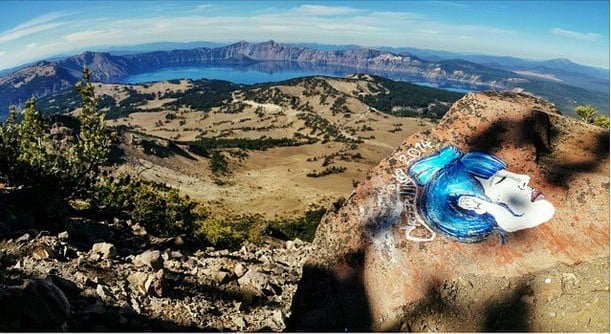Law & Politics
Graffiti Cleanup in National Parks Proves Challenging


Sarah Cascone

The “street art” that an Instagram artist created in a number of National Parks is proving difficult to remove, reports the Associated Press. The graffiti, painted on rocks across the West by 21-year-old Casey Nocket, has been widely decried as vandalism (see “Street Art Comes to National Parks—Is It Vandalism?“), and could permanently damage portions of our natural landscape.
Removing the unwanted images without causing further damage is a delicate task, as chemical solvents and sandblasting can potentially strip away more than just the paint, affecting the underlying stone, geologically important micro-fossils, or nearby ancient rock art. Workers are carefully testing chemicals to make sure they are safe to use, then applying them in a stream of low-pressure hot water. Plastic kitchen spatulas are being used to carefully scrape off the acrylic paint, layer by layer.
“They will repeat that as often as it takes until they remove all the paint or until they can’t remove any more,” National Park Service spokesman Jason Olson told the AP. The process could last for quite some time, as at least one of Nocket’s paintings, a blue-haired woman overlooking Oregon’s Crater Lake, is already iced over, forcing workers to wait until spring to begin the clean up.
Since being outed on hiking blogs and in national news outlets, Nocket has suspended her social media accounts on Instagram and Tumblr, where she went as “creepytings.” Though her artwork was a particularly brazen instance, vandalism in the national parks is far from uncommon.
Many thoughtless tourists feel compelled to scratch messages into the landscape, leaving rangers to erase their mess on a near-daily basis. “Even though people know they shouldn’t do it, as soon as someone else has done they just jump right on board,” said Jason Theuer, cultural resources chief of California’s Joshua Tree National Park, to the AP. While he recognizes that humans are by nature compelled to leave our mark, he is adamant that “our national parks are not the place for it.”